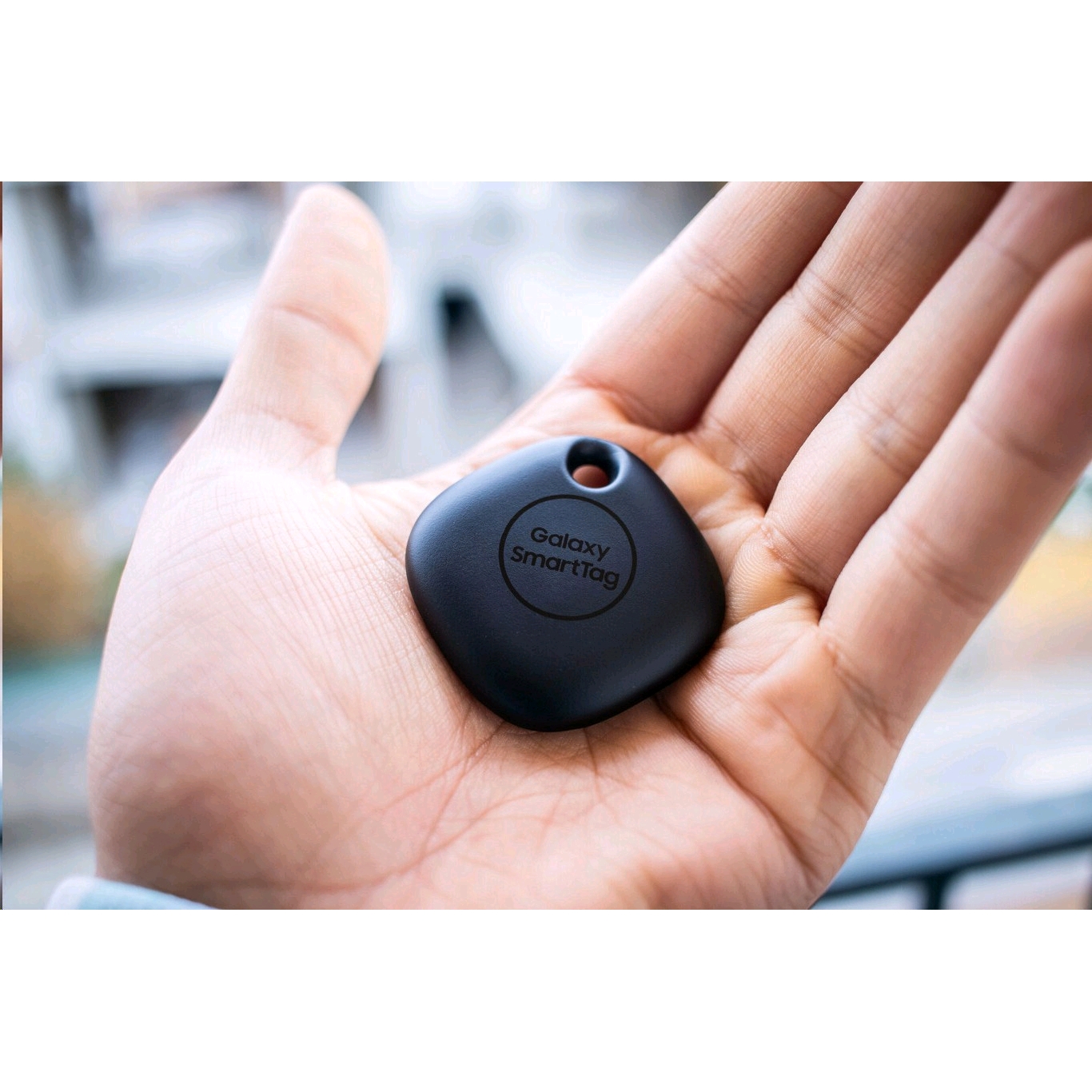Interview Samsung Fastcompany Jung Smarttag Smartthings

Samsung VP Jaeyeon Jung Talks SmartTag
Samsung VP Jaeyeon Jung recently sat down with me to talk about the company’s new Galaxy SmartTag and how it fits into its SmartThings ecosystem. He said that he sees a lot of potential for SmartTags, particularly in business-to-business applications.
The devices are a natural evolution of Samsung’s SmartThings Find feature, which uses Bluetooth Low Energy (BLE) and ultra-wideband (UWB) technology to help users locate select Galaxy smartphones, tablets, smartwatches, and earbuds.
How does the device work?
Samsung’s SmartThings is a home automation platform that allows users to connect and control their devices using an app. There are a number of ways that the system can be used, such as controlling the temperature in your home or monitoring how much energy your appliances are using.
One of the most popular ways to use the platform is to connect different devices together to create a smart home. This includes things like smart plugs, sensors, and lights that can be controlled through a mobile device or voice assistant.
However, there is a lot of setup and configuration involved in creating your own smart home. This includes weighing the pros and cons of each platform, deciphering the various IoT protocols, and setting up a smart hub to connect all of your connected devices.
At CES 2023, Samsung unveiled its latest smart home device, the SmartThings Station. It acts as a smart home hub that syncs with your SmartThings-compatible devices, including TVs, speakers, thermostats and lights. It also functions as a Matter controller to onboard devices that are compatible with the new smart home standard, Matter.
The device can be programmed to trigger specific scenes and functions when a button is pressed, which means you can set it up in a way that works for your home. It’s a great way to make your smart home more convenient for you.
You can also use the device to find your lost belongings, including wallets and car keys. Galaxy SmartTag, which is part of the SmartThings Find service, uses Bluetooth Low Energy (BLE) technology to help you locate your items.
It also has an offline finding mode, which draws help from other nearby Samsung Galaxy devices to help you find your missing items. This mode only works if your item has been offline for at least 30 minutes.
When you have a problem with finding your misplaced device, simply open the SmartThings app on your smartphone and turn it into a “helper.” Then, any Galaxy device that’s in range of your phone can alert the SmartThings server of its location, which will then send it to your smartphone.
How can I use it?
The Samsung SmartTag is a Bluetooth-powered tracker that can help you find misplaced items. It’s a tile-like device with a small hole at the top that you can hook to your keys or place inside your wallet. Once you’ve attached it to an item, you can use the app on your phone to locate that item.
The device connects to your phone via Bluetooth and sends a BLE signal when you’re near it or if it’s disconnected from the phone. If a nearby Galaxy smartphone can detect the SmartTag, it will update Samsung on its location to help you find it.
It works on the same Bluetooth network as other Samsung devices and is compatible with the SmartThings app, which can be downloaded from the Google Play Store or Apple’s App Store. However, it’s important to remember that compatibility is limited to Galaxy phones – and Android 8 and above, more specifically.
Besides the main functionality of locating lost items, the SmartTag also helps you avoid losing them in the first place. The device can be set to automatically alert you if it’s been taken away from your sight or even left behind at work.
This is especially useful for people who are often prone to forgetting their things. You can also set the device to notify you when it is in motion, so you don’t accidentally lose it on the subway or somewhere else.
Another feature is that the device can be paired with other Samsung products to help keep track of them as well. This includes the SmartThings Station, which is a hub that helps you keep track of items that are registered with the device (like tablets and watches), as well as earbuds and other personal belongings like keys or a wallet that have a Galaxy SmartTag attached to them.
The SmartThings Station also acts as a wireless charging pad for the device, and it can charge other devices as well. It can be paired with your phone with a QR code, and you can also set up routines on it through the SmartThings app.
What are the benefits?
Samsung has a variety of SmartTag devices, which can be used to track various items. They work via Bluetooth Low Energy (BLE) and ultra-wideband technology, as well as augmented reality to help users locate lost items.
According to the company, more than half of Galaxy SmartTag owners link their devices to car keys, wallets, and bags. They also use the easy-to-use SmartThings Find service to keep track of their belongings.
Using Bluetooth Low Energy and ultra-wideband technologies, the SmartTag can be detected by nearby devices. Upon receiving a signal, the app will display a green circle around the item and let users know where they are in relation to it. When users get closer, the circle will expand to a larger size and the device will ring.
With the device, users can easily locate their belongings if they lose them in a public place. When they are near a Samsung phone, the app will show them on a map where their tag is located.
Another feature is called Offline finding, which lets you locate a device when it’s not connected to the Internet. This feature uses BLE and UWB technology to draw help from other Samsung phones or devices nearby that can locate the tag’s location and send it to the SmartThings app on the user’s smartphone.
Once you have an item tracked, you can set up routines to activate when the SmartTag is in range. These routines can help automate certain aspects of your life, such as turning on lights or appliances when you arrive home, or setting an alarm if you leave the house.
You can also customize the settings for the device to make it more convenient and useful. For example, if you want to trigger a routine when you turn on the TV, you can select this option in the settings menu.
In addition to this, the device can also be paired with a compatible SmartThings hub like Samsung’s SmartThings Station. This makes it easier for consumers to monitor the devices in their home and set up different routines, which add convenience and reduce energy waste.
What are the drawbacks?
The Galaxy SmartTag is a small Bluetooth tracker that attaches to your keys, wallet or other personal belongings. Once paired to your smartphone, it can be tracked and managed from the SmartThings app, preventing you from losing your belongings.
The SmartTag is a part of the SmartThings Find service which aims to help users locate their Samsung Galaxy devices (including phones, tablets, watches and earbuds) when they’re lost or misplaced. The service, launched in January 2021, uses BLE and UWB technologies to locate these items.
At the outset, it looks like Samsung has a winner on its hands with the SmartTag and SmartTag+ – two well-made, easy to use, seemingly reliable trackers that leverage Samsung’s mighty SmartThings Find network to the full. We put both of them to the test against their biggest rivals in a bid to find out how they compare, and whether they’re worth buying.
Firstly, there’s the aforementioned SmartThings Find network – a massively scaled up version of its previous IoT platform which is home to more than 70 million helper devices. This is a great thing, as it means you have more than enough potential nodes in your area to help you track down any item you’re missing; but it also limits the size of your local finding area.
Next, there’s the SmartTag+ – an improved version of its predecessor that boasts a range of features to make it an even more useful tracker. Those include voice-activated Bixby4 searches, separation alerts and a feature which scans for unknown Galaxy SmartTags to prevent them from tracking your location as you move about.
There’s also the SmartTag Station, which is a handy device scanner that can help you keep an eye on your other connected devices (from smartwatches to earbuds) when they’re out and about, as well as triggering a variety of automated routines that will add a touch of convenience to your life at home.
The main drawback is that these devices rely on removable CR2032 coin cell batteries for power, making them slightly more expensive than their Tile and AirTag-rivals; but the app tells you how many days you can expect to get from each charge. Those figures are more than enough to justify the high price tag and should give you plenty of time to decide if a tracker is right for you.










